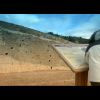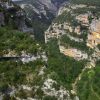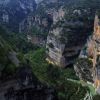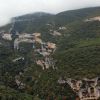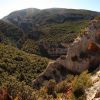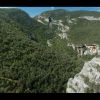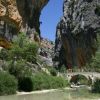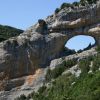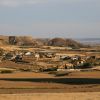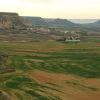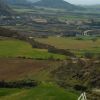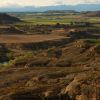Ruta geológica
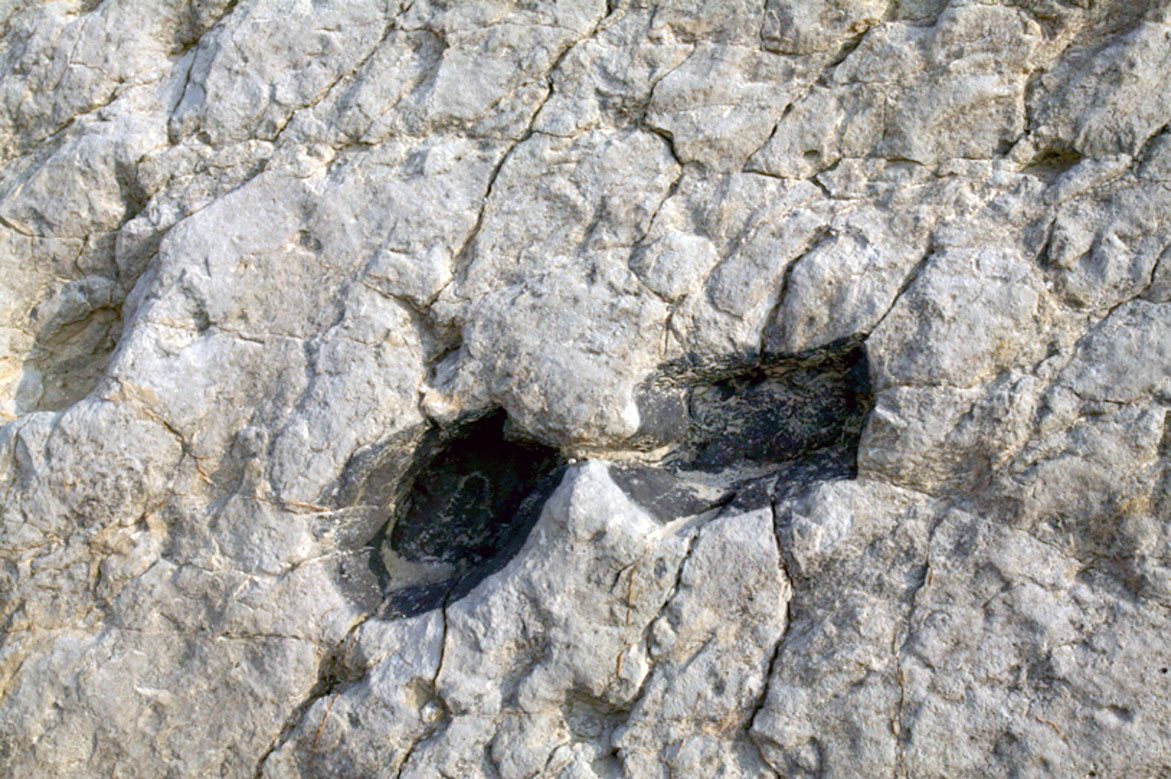
At the entrance to Abiego on the road from Bierge there is an interesting collection of over 1000 ichnites preserved in a layer of limestone. They are the fossilized footprints of herds of herbivores, now extinct, that lived on what were meadows dotted with small lakes. They are thought to correspond to the artiodactyla group of mammals, possibly the Anoplotherium or Entelodon.
Between 35 and 40 million years old, they date back to between the Eocene and Oligocene periods. Originally left in mud, the footprints filled with leaf and plant residue, which protected them from erosion.

Between the villages of Lecina and Alquézar, the River Vero has patiently carved its way through calcareous rock forming impressive rock walls peppered with hollows and caves. These are the result of water seeping through fractures in the ground and slowly dissolving the limestone.
The famous descents of the river Vero runs from Lecina to Alquézar. Several hiking trails can be practiced in the vicinity of this canyon:
- Camino del Rotizo
- Ruta de las Pasarelas del Vero
- Ruta al Tozal de Mallata
- Camino Natural del Somontano
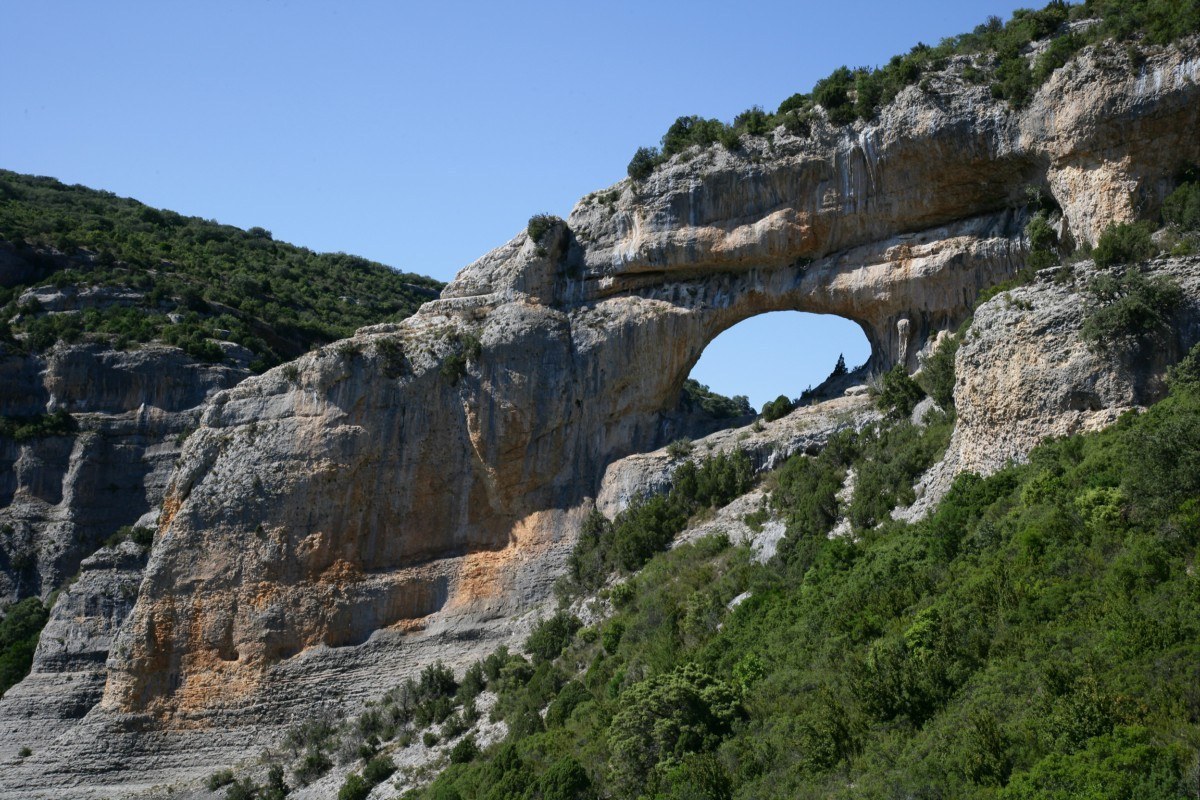
At the head of the Fornocal canyon this impressive natural arch is a wonderful example of karstic modelling in the Guara region.
Signage: Portal de la Cunarda Route
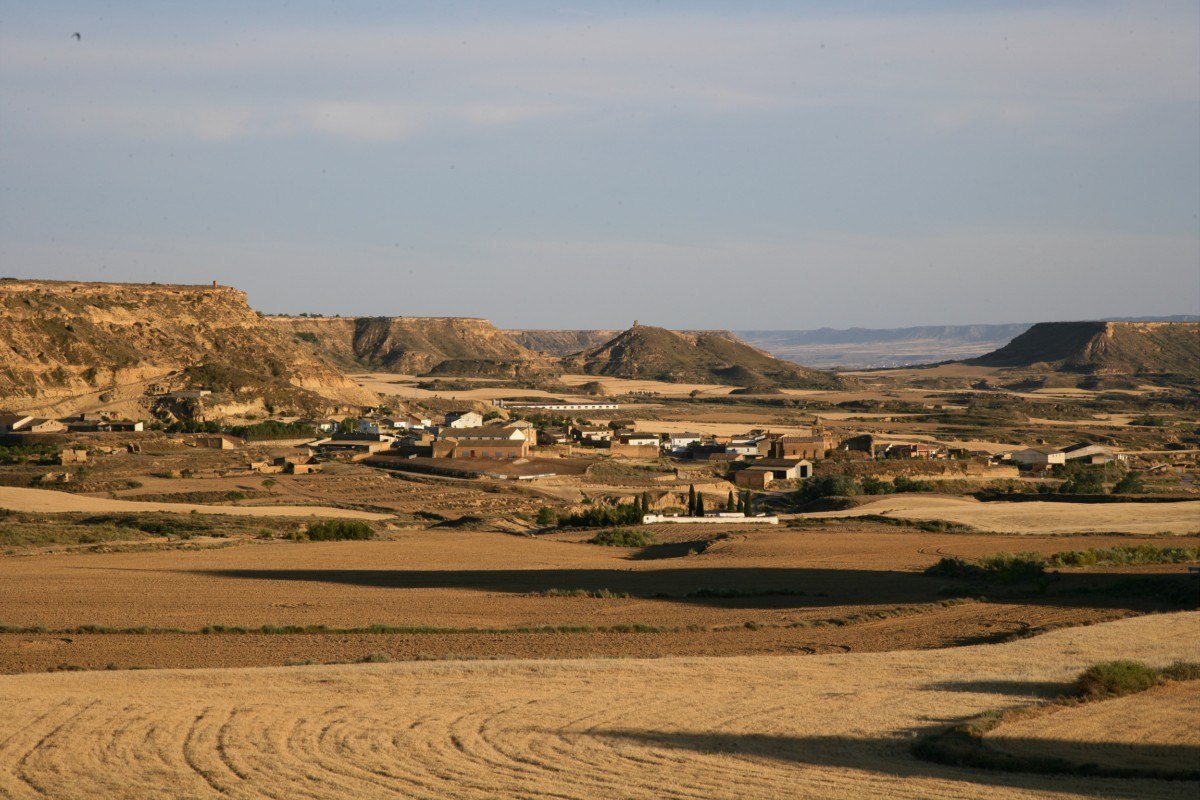
These table-top hills are located to the south of Somontano. Before the Alpine orogeny occurred, sediments of different matter settled horizontally and, layer by layer, built up a stratum of diverse compositions. (limestone, clay, loam etc.) Later, the erosive effects of a network of rivers gave rise to these distinctive hillocks. They are all that remains of a large surface area and now sit isolated between wide valleys that were patiently carved by the erosive force of the rivers.













